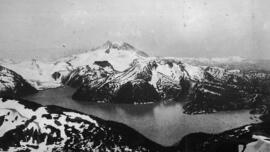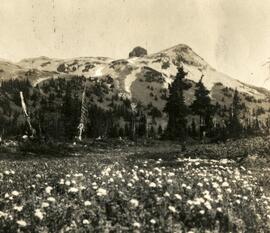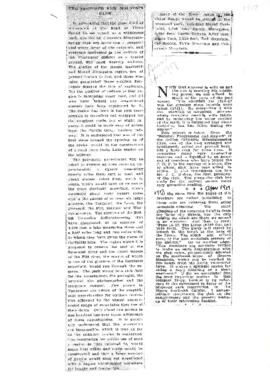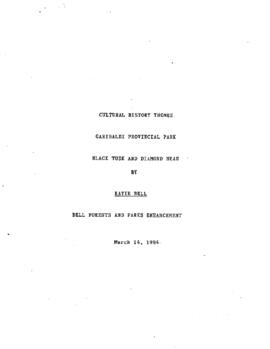Elements area
Identifier
Title
Date(s)
Description
The early explorers had no limits on where they could travel or camp. No campfire bans or reservation systems to wrestle with. Some might think that sounds idyllic. But the lack of rules also applied to mining or logging companies who could claim rights to any piece of land, and strip it of its resources.
The early settlers who explored the mountains did not understand Indigenous relationships with the land. They did however have a growing awareness of logging that was happening in remote areas.
On summer expeditions, BC Mountaineering Club members bonded not only with each other but also the land. Summer camps in the meadows around Garibaldi Lake and Black Tusk gave them an appreciation for the special habitat and a desire to see it protected from logging.
It took around a decade, but their advocacy was instrumental in the creation of Garibaldi Provincial Park. The Club went on to advocate for other park areas around the province, such as Seymour and Pinecone Burke.
Though harvesting of natural resources on an industrial scale was prevented in new park areas, there was also an impact on land use by the Indigenous Peoples that hunted or gathered food there — an impact that remains today.
This selection of archives includes the 1915 BC Mountaineering Club’s letter and resolution sent to the Provincial Lands Department advocating for the creation of Garibaldi Park, and a 1919 article from the BC Magazine called Glorious Garibaldi” by A H Sovereign, where he describes the flora, the mountains and why the area should be protected. The archives, such as the those mentioned above, offer an interesting insight into the values those explorers placed on those areas, which actually differs from the reasons we would argue for protection today. Explore them to find out why.
Types
- Story



![[Letter from the BCMC to the BC Provincial Lands Department regarding the Creation of Garibaldi Park]](/uploads/r/passion-for-adventure/9/1/c/91cc682e1cb246ea501283bb14ac1c4c033fc9ad5161a6c1dcc7009aae3b0b01/F205-S12_12-7_-i2_142.jpg)
![[Photocopied ACC Letter to the Premier of BC advocating for the creation of Garibaldi Park]](/uploads/r/passion-for-adventure/0/d/3/0d3ee8f50754e4f4a2d3a86ef31c6a7ef4a9b633f81ac7dbe53f4439f5294c3b/F205-S12_12-7_-i3_142.jpg)






![[Letter from the Secretary of the BCMC to the BC Provincial Minister of Lands regarding the creation of a Park Area on Seymour Mountain]](/uploads/r/passion-for-adventure/6/3/b/63b63cd529249cc3801f85948191a27eecef513798a18f185eb197b9e49bce81/F205-S12_12-9_-i1_142.jpg)
![[Letter from the BC Provincial Minister of Lands to the Secretary of the BCMC regarding the creation of a Park Area on Seymour Mountain]](/uploads/r/passion-for-adventure/e/b/5/eb5694ab482d95677e4bb9bfb874c578546dd522dae9ba65ae4615dfcad5185b/F205-S12_12-9_-i2_142.jpg)
